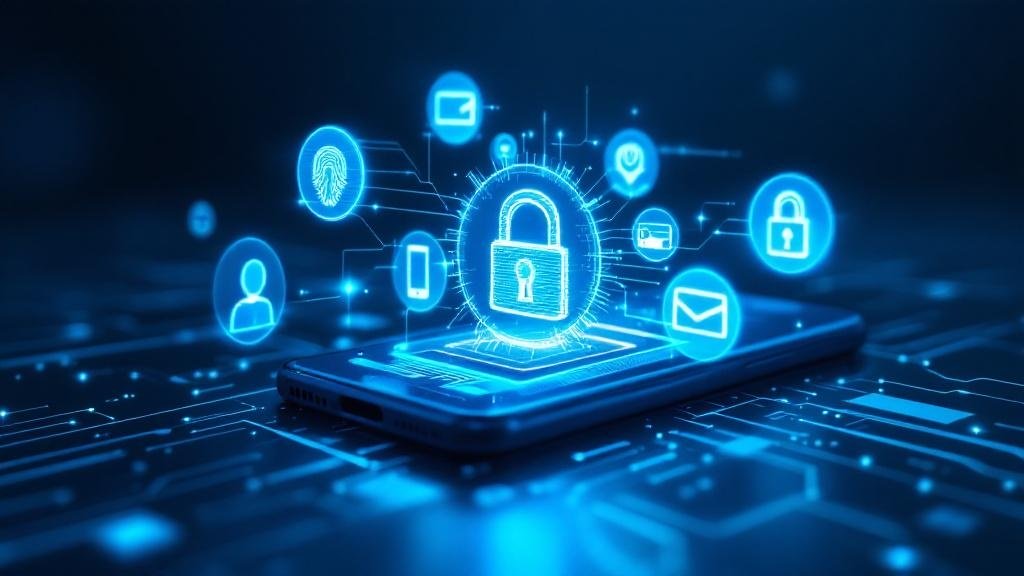As mobile payments grow more popular in our increasingly cashless world, digital wallets are becoming the go-to choice for millions of users. Whether you’re using Google Pay, Apple Pay, or Paytm, these platforms offer convenience and speed. But with great convenience comes a serious question—how safe are digital wallets?
In this guide, we’ll break down the most common digital wallet security risks, how you can avoid them, and the best practices to protect your money and personal information.
🔐 What Are Digital Wallet Security Risks?
A digital wallet is an app that stores your payment information—credit/debit cards, UPI IDs, and more—on your smartphone. You use it to make contactless payments, shop online, or transfer money.
But like any digital tool, these wallets come with vulnerabilities. Here are some common mobile wallet security issues:
1. Mobile Wallet Vulnerabilities
Most wallets rely on your phone’s software and internet connectivity. If your device is compromised—say, through malware or an outdated OS—it can lead to security breaches.
Example: If you download apps from unverified sources or skip software updates, your wallet data could be exposed.
2. Data Breaches and Digital Payment Fraud Risks
Digital wallet data breaches occur when hackers gain unauthorized access to wallet databases or your device. These attackers may steal sensitive details like card numbers, passwords, and personal info.
Real-Life Case: In 2023, several users of a well-known mobile payment platform in Asia reported unauthorized transactions due to phishing scams.
3. Cybersecurity Threats to Digital Wallets
Hackers use techniques like man-in-the-middle attacks, phishing, and malware to intercept your payment info during transactions.
4. Risks of Using Digital Wallets on Public Wi-Fi
Using a wallet over unsecured public networks (like in cafes or airports) makes you vulnerable to eavesdropping and data theft.
🛡️ How to Prevent Digital Wallet Security Risks
Let’s explore some actionable steps to make your wallet usage safer and smarter.
✅ 1. Use Secure Mobile Wallet Apps Only
Always download apps from official app stores like Google Play or Apple’s App Store. Look for:
Verified developer profiles
High user ratings and reviews
Regular updates and support
Avoid installing APKs or apps from third-party sites.
✅ 2. Enable Two-Factor Authentication (2FA)
Most digital wallets support two-factor authentication. This adds an extra layer of security by asking for a second verification step—like an OTP or biometric scan.
Why it matters: Even if someone knows your password, they can’t access your wallet without the second layer.
✅ 3. Use Biometric Authentication
Fingerprint scans or facial recognition offer better security than just a PIN. These features are harder to spoof and prevent unauthorized access.
✅ 4. Avoid Using Public Wi-Fi for Transactions
Public networks are often unencrypted. If you must use them, enable a VPN to secure your internet connection.
✅ 5. Turn Off Auto-Login Features
Auto-login may seem convenient but leaves your financial info open if your device is lost or stolen.
Tip: Set up your wallet to log out after a short inactivity period.
✅ 6. Keep Your Phone’s Software Updated
Regular updates patch security loopholes and keep your system secure from new types of cybersecurity threats to digital wallets.
🔧 How Digital Wallets Use Technology to Stay Secure
Digital wallets come with built-in protections that you should understand:
🔒 1. Data Encryption
Encryption scrambles your financial data into unreadable code. Most wallets use end-to-end encryption, which protects data both in transit and at rest.
Example: Your card number is never shared directly; instead, encrypted tokens are used.
🔒 2. Tokenization
Instead of transmitting your real card number, wallets send a unique token during transactions. If stolen, this token is useless without the original device.
🔒 3. Near Field Communication (NFC) Security
NFC technology allows contactless payments. It only works at close range (a few centimeters), reducing interception risks. Still, always keep NFC turned off when not in use.
🧠 Common Digital Wallet Safety Concerns (and How to Solve Them)
| Concern | Risk Level | Solution |
|---|---|---|
| Lost or stolen phone | High | Lock phone remotely, disable wallet access |
| Phishing scams | High | Never share OTPs or click unknown links |
| App cloning | Medium | Verify app developer before downloading |
| Weak passwords | High | Use strong, unique passwords with 2FA |
| Unverified UPI requests | High | Reject requests from unknown sources |
📱 Mobile Wallet Fraud Prevention Tips
Want to stay ahead of scammers? Follow these simple, practical tips:
Review wallet transactions regularly for suspicious activity
Avoid saving card details unless necessary
Set transaction limits for daily transfers
Enable alerts and notifications for every payment or login attempt
Report fraud immediately to your wallet provider and bank
📉 What Happens in a Digital Wallet Data Breach?
In a data breach, sensitive user info is exposed, often sold on the dark web. Here’s what’s at risk:
Personal details (name, phone, email)
Linked bank account info
Saved card numbers (if not tokenized)
UPI ID or VPA
How to react:
Change passwords and security pins immediately
Contact your bank to block cards
Report the incident to your wallet provider and cybersecurity helpline (in India, dial 1930)
🔐 Best Practices for Financial Data Protection
To stay secure while using mobile payments:
Use strong device passwords or screen locks
Regularly scan for malware using trusted antivirus apps
Avoid jailbreaking or rooting your phone—it bypasses security layers
Always log out from shared or public devices
👨⚖️ Legal Protections & Your Rights as a Consumer
In India and other regions, consumers have rights when it comes to digital wallet fraud. For example:
RBI mandates wallet providers to resolve complaints within 90 days
You are not liable for fraud if reported within 3 days of unauthorized activity
Consumer forums and banking ombudsmen can help resolve disputes
Stay aware of your rights, and always report issues early.
📌 Final Thoughts: Are Digital Wallets Safe to Use?
Yes, digital wallets are generally safe—but only if you use them wisely.
They offer convenience and speed, but ignoring security precautions exposes you to serious risks. By being aware of digital wallet security risks and taking the right preventive steps—like using biometric authentication, data encryption, and two-factor authentication—you can enjoy mobile payments safely.
Remember, security begins with you. Make your phone smarter—not riskier.
❓ Frequently Asked Questions (FAQs)
1. What are the biggest digital wallet security risks?
The most common risks include phishing, malware, public Wi-Fi exposure, weak passwords, and data breaches caused by unsecure apps or outdated systems.
2. How can I protect my mobile wallet from fraud?
Use trusted apps, enable two-factor authentication, avoid public Wi-Fi, and monitor your transactions regularly. Install updates and use biometric security.
3. Is it safe to use mobile payments on public Wi-Fi?
No. Public Wi-Fi is vulnerable to hackers. Always use a secure network or VPN when making payments.
4. What should I do if my digital wallet is hacked?
Immediately report to the wallet provider and bank, block your linked cards, change passwords, and file a complaint via the cybercrime portal or helpline.
5. Do digital wallets use data encryption?
Yes, most reputable wallets use strong end-to-end encryption and tokenization to secure your financial data during transactions.
6. Can someone access my wallet if I lose my phone?
If you’ve enabled a screen lock, biometric authentication, and remote device locking, your data will likely remain safe. Always report and lock your wallet remotely.
7. Are mobile wallets safer than credit cards?
They can be. Mobile wallets often use tokenization and biometric security, making them harder to clone than physical cards.








Comments (0)